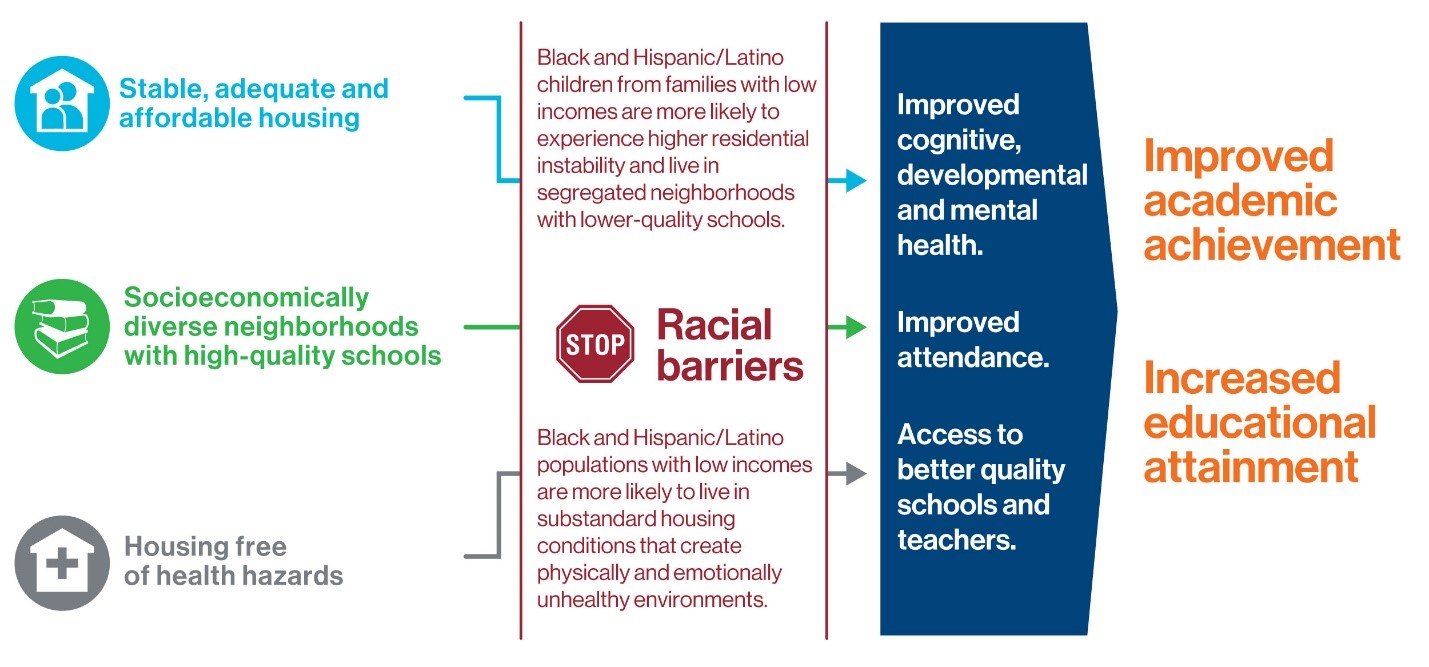
Research series: How does housing affect children’s education?
The location and condition of a child’s house plays a significant role in their physical, cognitive and emotional development and well-being, which impacts their education through improved attendance, better cognitive and behavioral health, and improved academic achievement. Making direct connections between housing and its impact on children’s education is challenging. However, studies have drawn a pathway between owning a decent, affordable and stable home and experiencing positive educational outcomes.
Highlights
Key factors for education-promoting housing
- Stable home environments raise young children’s math and reading test scores, and affordable homeownership is a conduit for greater residential stability.
- Removing hazards and providing homes that eliminate overcrowding leads to better physical and mental health, development, and educational achievement for children.
- Studies have demonstrated that families whose housing costs are subsidized and can choose which neighborhood to live in have children who attend schools with higher attendance rates, graduation rates, and reading and math proficiency rates, along with lower dropout and violence rates.
Key place-based barriers to improving racial disparities in education
- Black and Hispanic/Latino populations are twice as likely to live in substandard housing as white populations. Substandard housing conditions, such as exposure to dampness, mold, toxic gases and lead hazards, increase the risk of adverse respiratory outcomes and lead poisoning, which can lead to more missed instructional days and lower academic performance.
- Children of color are more likely to experience housing disruptions and changes in school attendance fueled by unsustainable housing costs when compared with their white peers.
- Black and Hispanic/Latino students are disproportionately concentrated in low-performing school districts when compared with white and Asian-majority populations.


